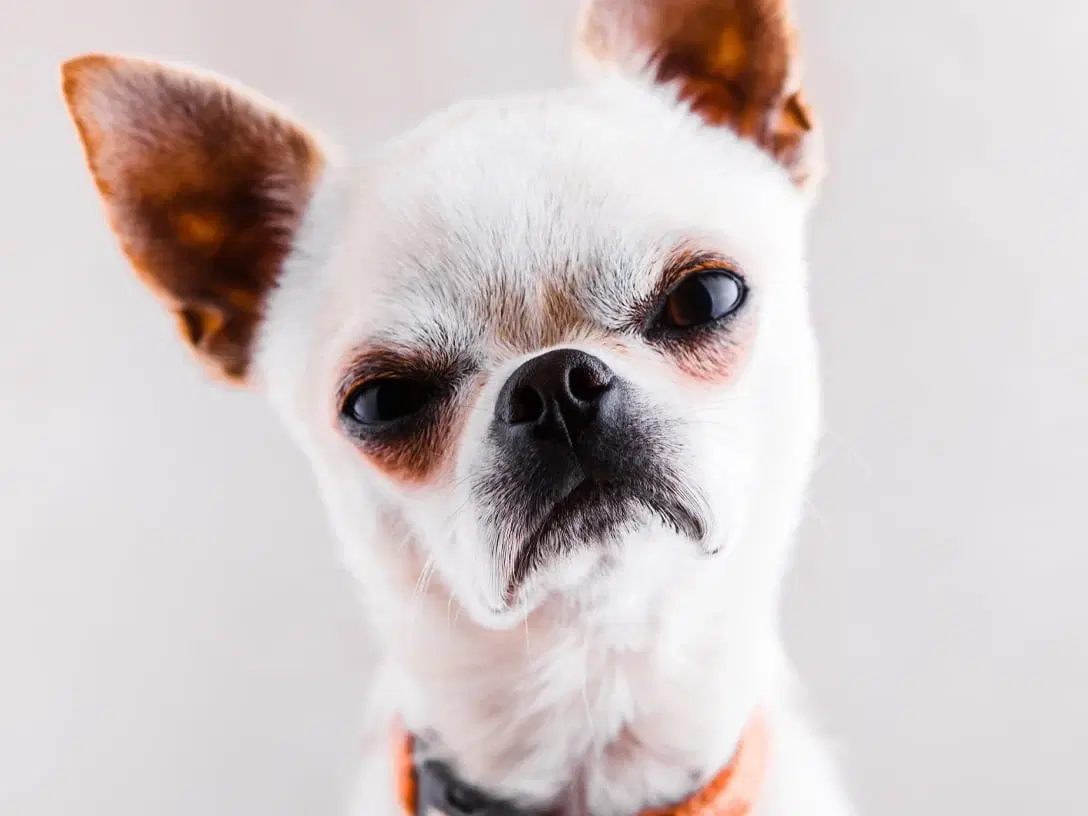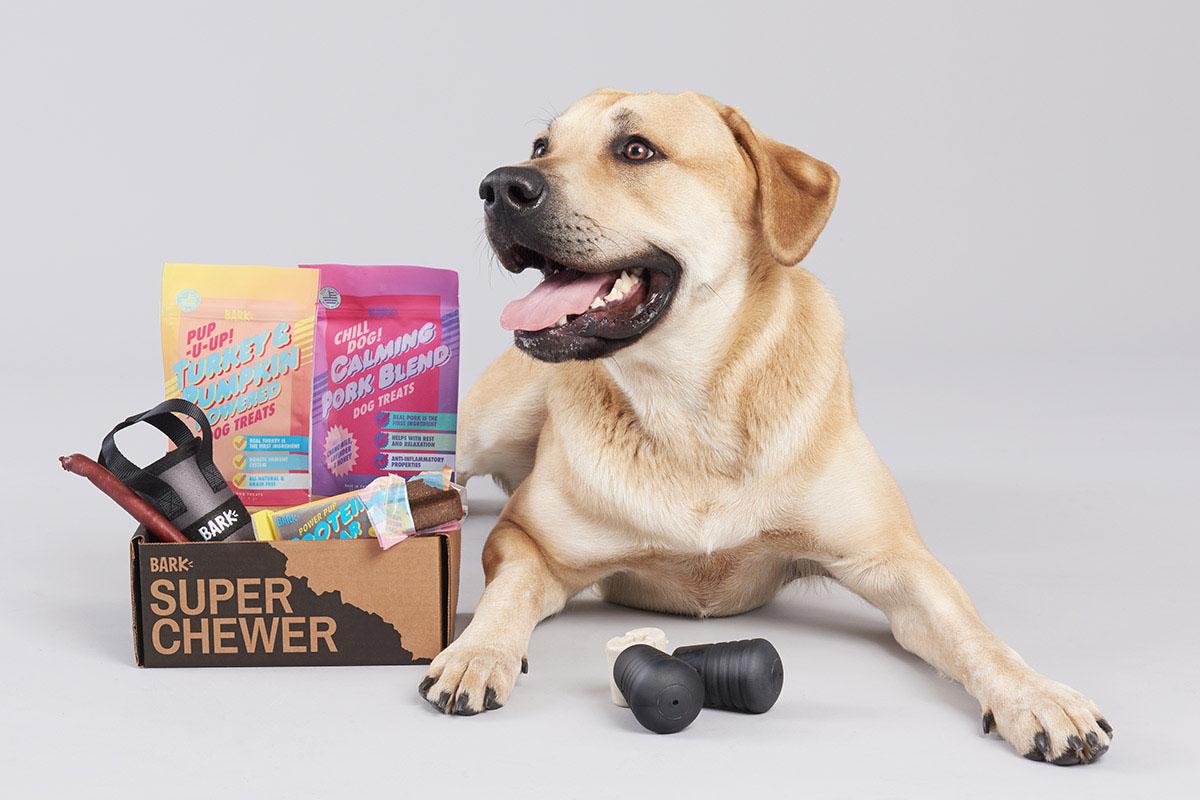How a puppy is raised, trained, and socialized has an immense impact on how they behave and whether or not they will display aggressive behaviors as adult dogs. While some breeds are more likely to develop these behaviors if their physical and mental needs aren't met or if they aren't properly trained or socialized, any dog can develop aggression without proper training and socialization.
Responsible ownership, focused on providing proper training and socialization, is the key to preventing aggression in any dog.
10 Aggressive Dog Breeds
1. Chihuahua
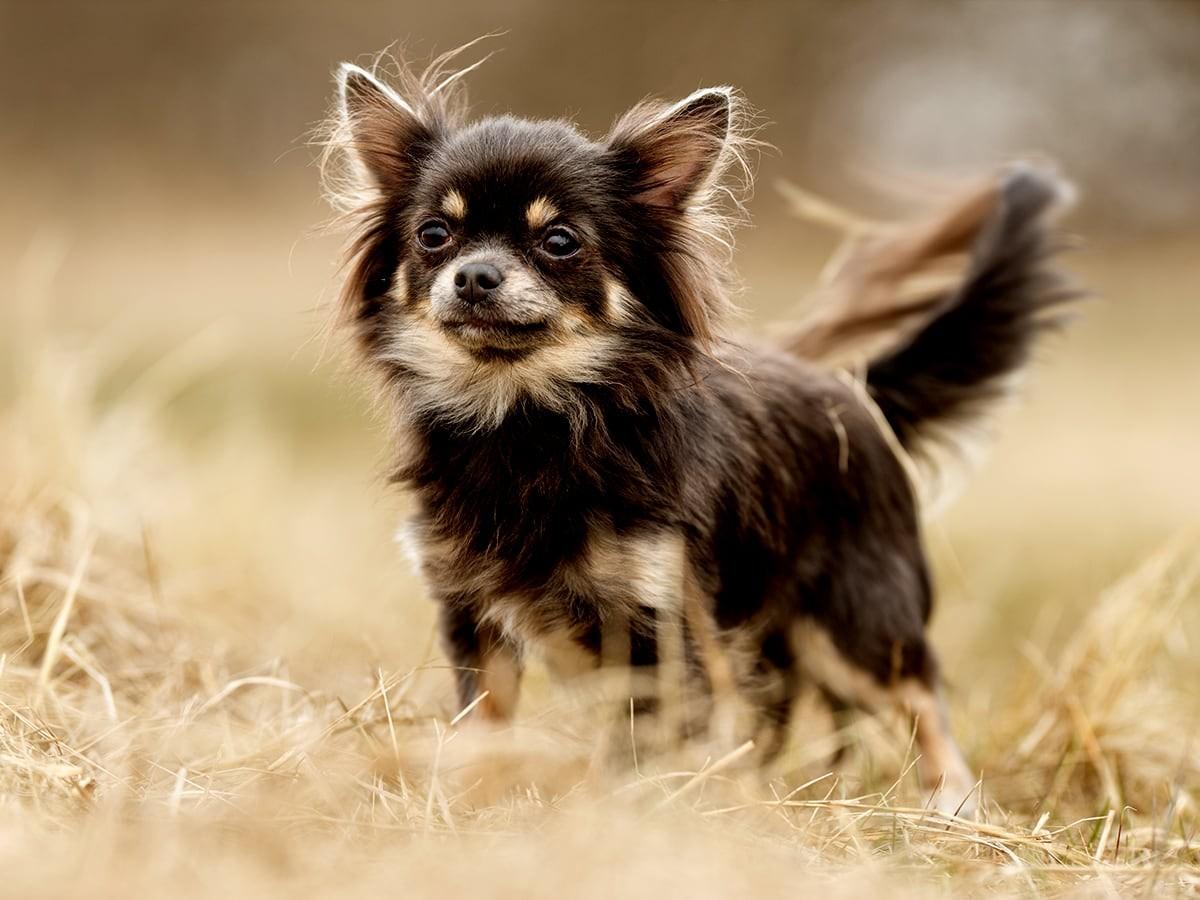
Average Weight: 2 to 7 pounds (male and female)
Average Height: 6 to 9 inches (male and female)
Life Expectancy: 12 to 14 years
As the smallest breed in the world, these tiny dogs may not look aggressive at a glance, but this breed has been known to display multiple traits of aggression. Chihuahuas are known to be very loyal and devoted to their pet parents. On its own, this can be a beautiful trait, it can often lead to jealousy and result in actions such as barking and biting.
2. Dachshund
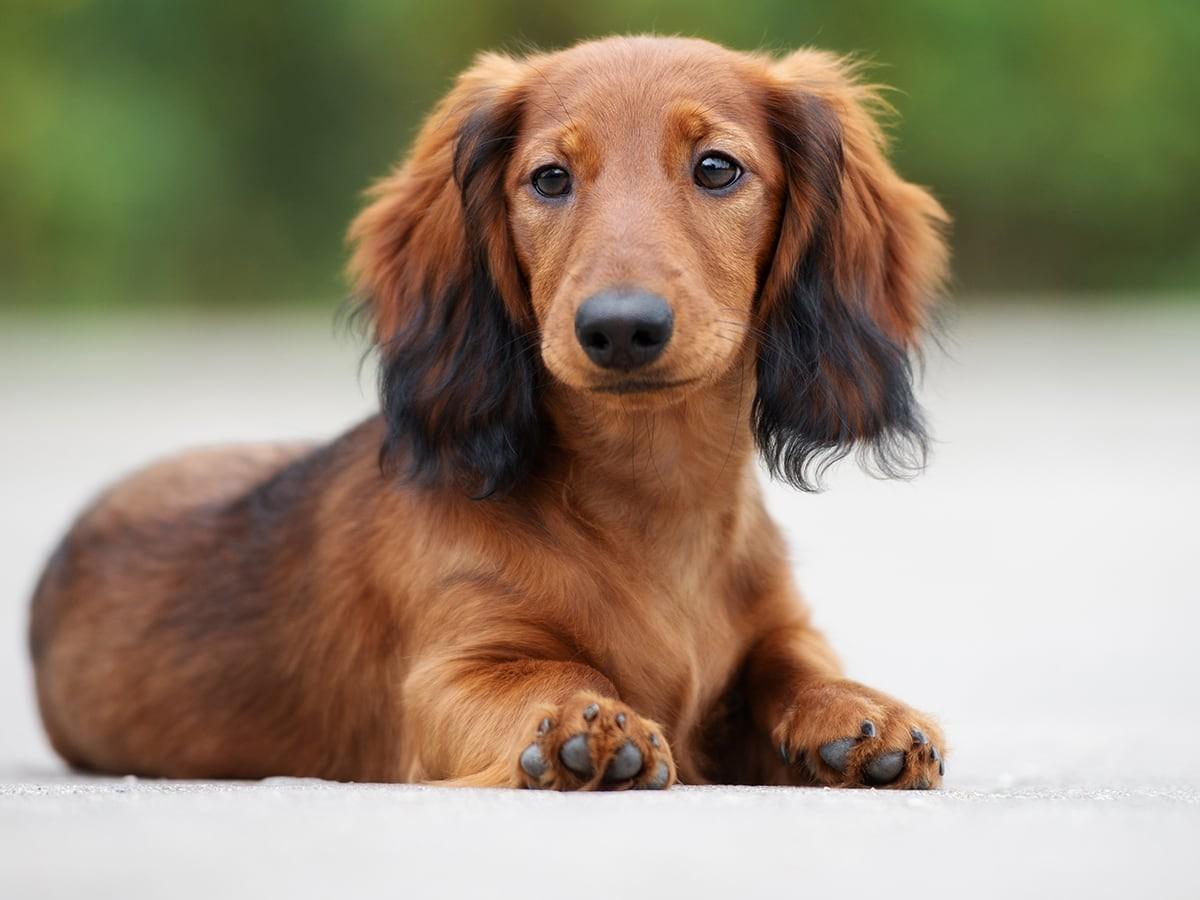
Average Weight: 15 to 30 pounds (male and female)
Average Height: 15 to 19 inches (male and female)
Life Expectancy: 12 to 16 years
Known by many names, the Weiner dog, Badger dog, Sausage dog, or Dachshund, is a short-legged, long-bodied breed known for its unique appearance. Primarily used for hunting in the past, it is not surprising that aggression can be a prominent trait. Another reason for the aggression displayed by this breed is its small size, which it tries to make up for with extra attitude. Here's an overview of the costs associated with the Dachshund.
3. Chow Chow

Average Weight: 40 to 90 pounds (male and female)
Average Height: 17 to 22 inches (male and female)
Life Expectancy: 11 to 13 years
Of Chinese origin, the Chow Chow is a sturdy dog with a dense double coat. These dogs are known for their skills in hunting and herding, both of which require assertive and dominant personalities. Here's a fun fact: one Chow Chow even became the beloved pet of ex-US President Calvin Coolidge. For a breakdown of the costs of owning a Chow Chow visit this page.
4. Akita
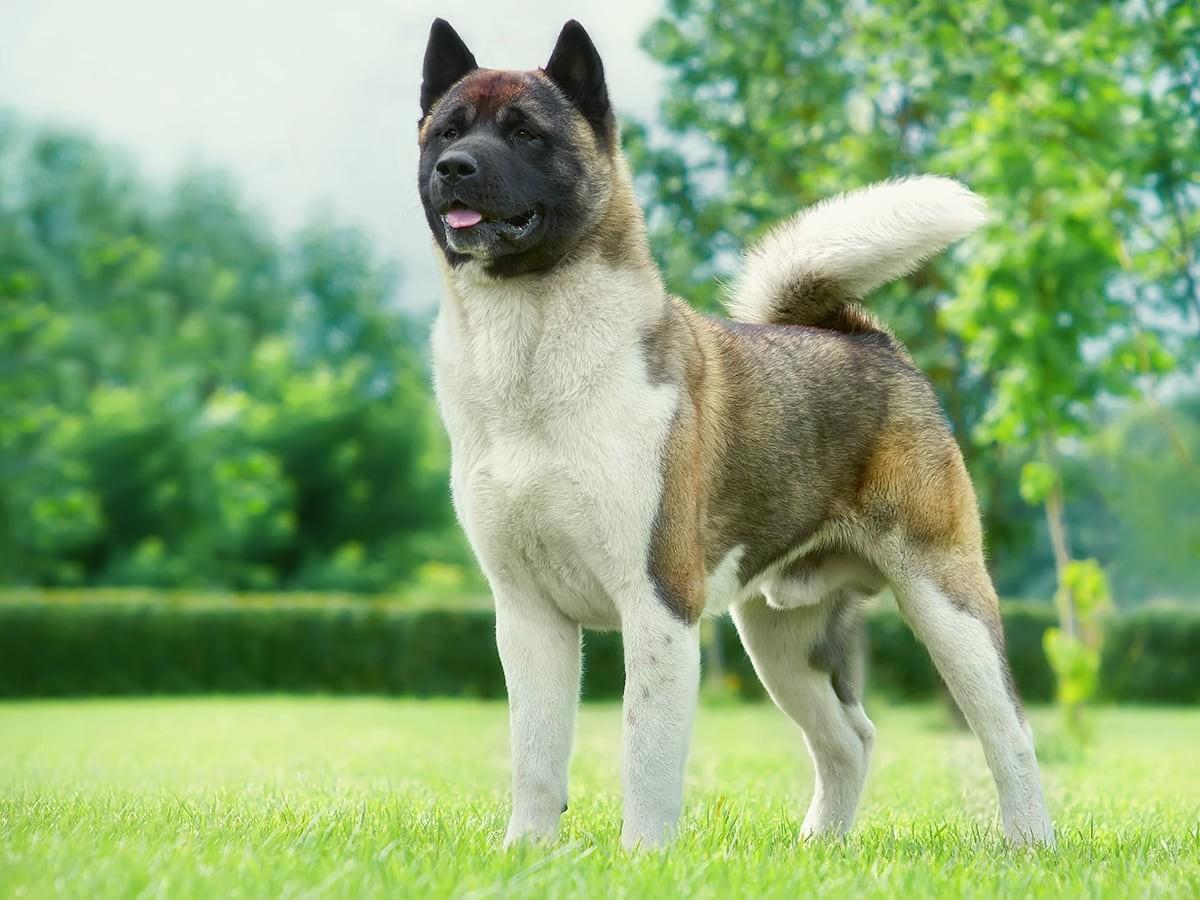
Average Weight: 60 to 100 pounds (male and female)
Average Height: 23 to 28 inches (male and female)
Life Expectancy: 8 to 10 years
A Japanese dog, the historic Akita originated in the northern mountains of Japan. Commonly used for policing and guarding, these dogs have developed a protective nature. Akita are naturally wary of strangers and other dogs and may even attack. Learn more about the cost of owning an Akita.
5. American Pitbull Terrier
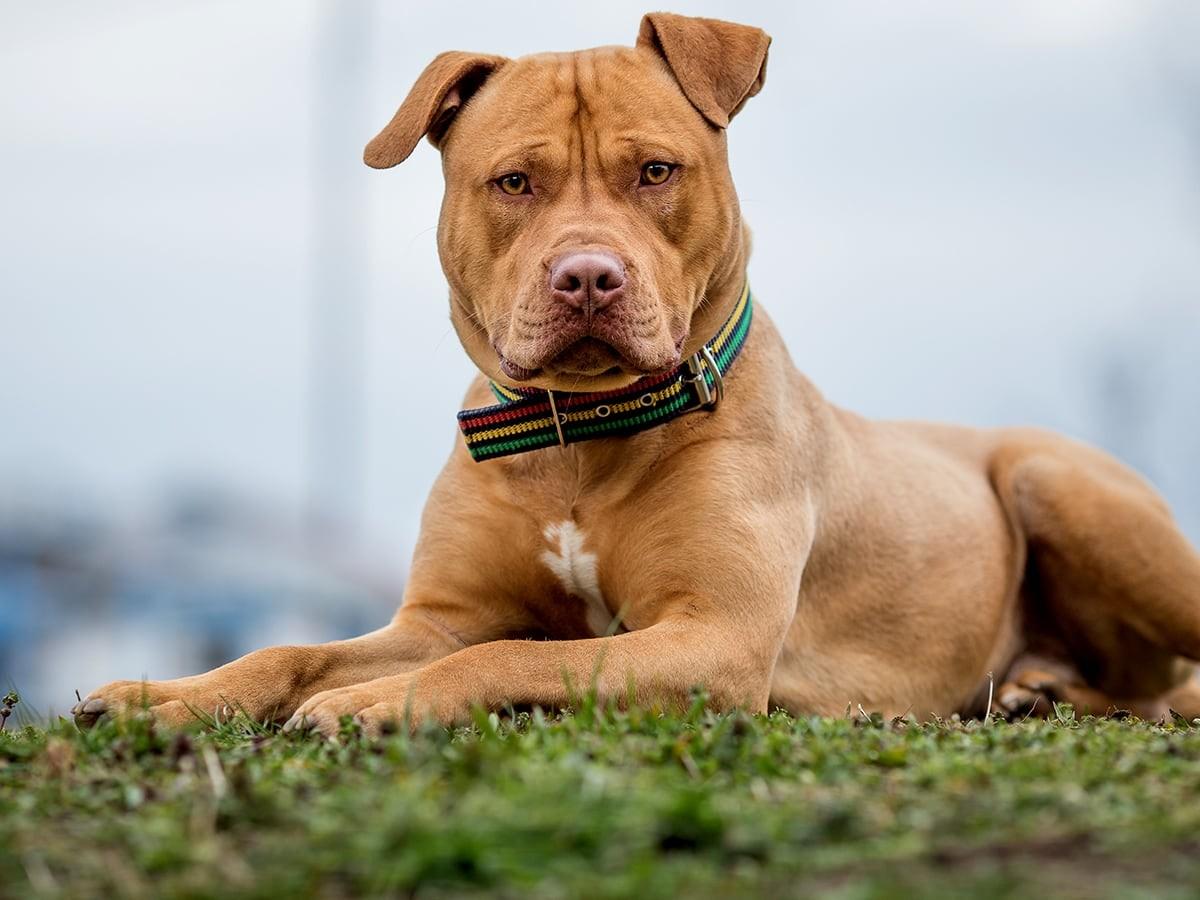
Average Weight: 35 to 60 pounds (male and female)
Average Height: 18 to 21 inches (male and female)
Life Expectancy: 8 to 14 years
American Pitbull Terriers are known for being tenacious and determined canines. These characteristics can often lead to aggressive behavior and the courage to engage in fights. However, with proper training, these dogs can be incredibly loving and affectionate pets.
6. Cane Corso
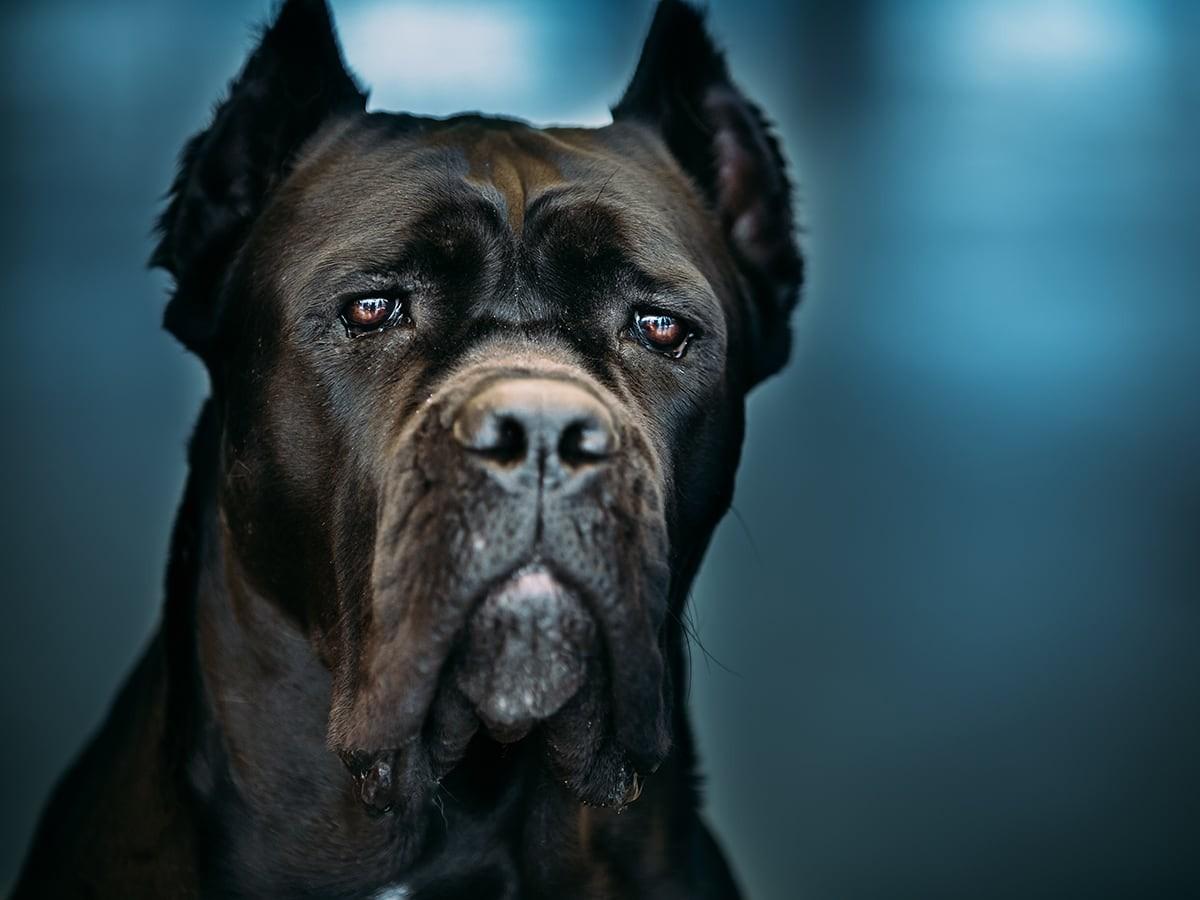
Average Weight: 100 to 110 pounds (male and female)
Average Height: 24 to 28 inches (male and female)
Life Expectancy: 10 to 12 years
An Italian Mastiff, this breed can often be found in the role of a companion dog or a guard dog. The Cane Corso is another breed that has in the past been used for hunting because of their aggressive nature. Cane Corsos are highly unlikely to be friendly with strangers. Learn more about the costs of owning a Cane Corso.
7. Doberman Pinschers
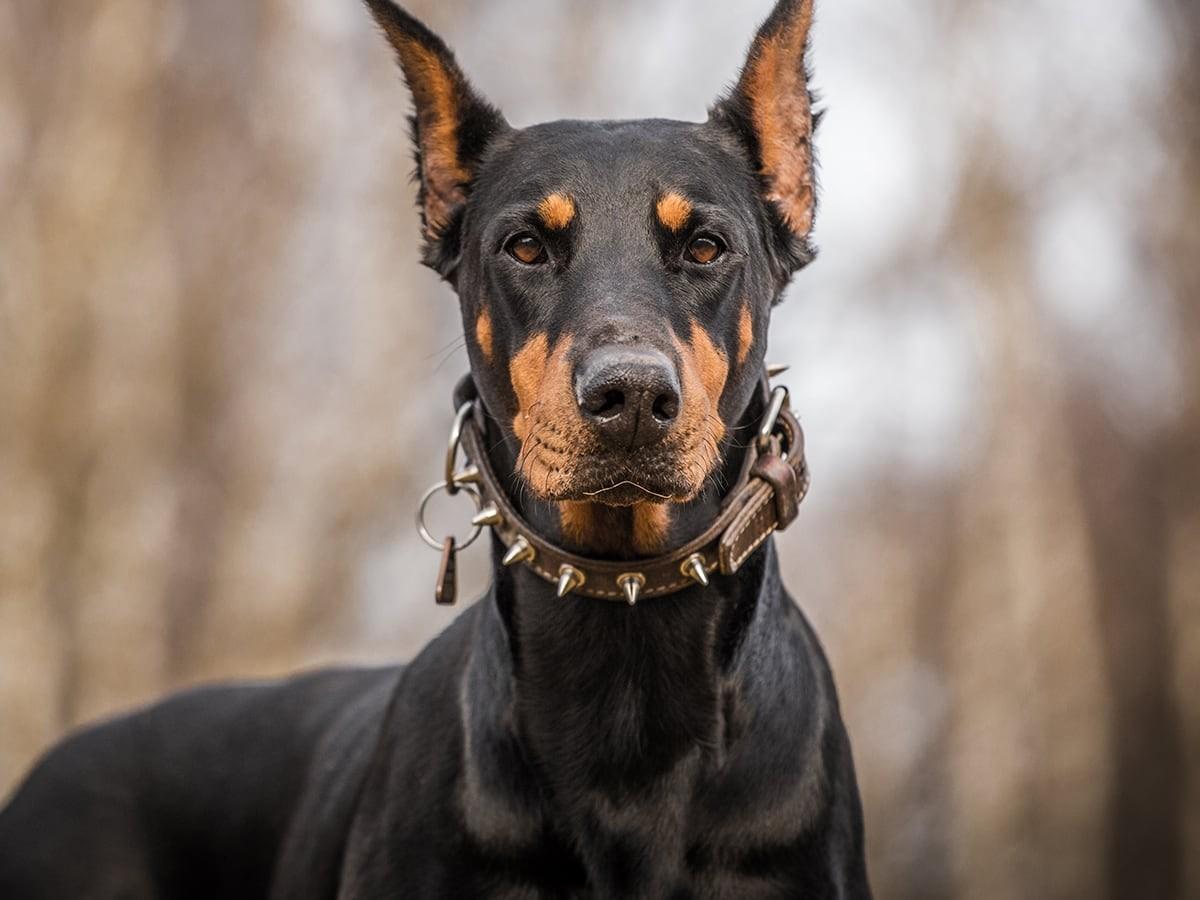
Average Weight: 60 to 100 pounds (male and female)
Average Height: 24 to 28 inches (male and female)
Life Expectancy: 10 to 12 years
This large breed developed by Louis Dobermann in Germany is among the most intelligent, tenacious, and energetic of guard dogs. Often used by the Police, Doberman Pinschers can become aggressive, especially with strangers, if not trained properly. Learn more about the cost of caring for a Doberman Pinscher.
8. German Shepherds
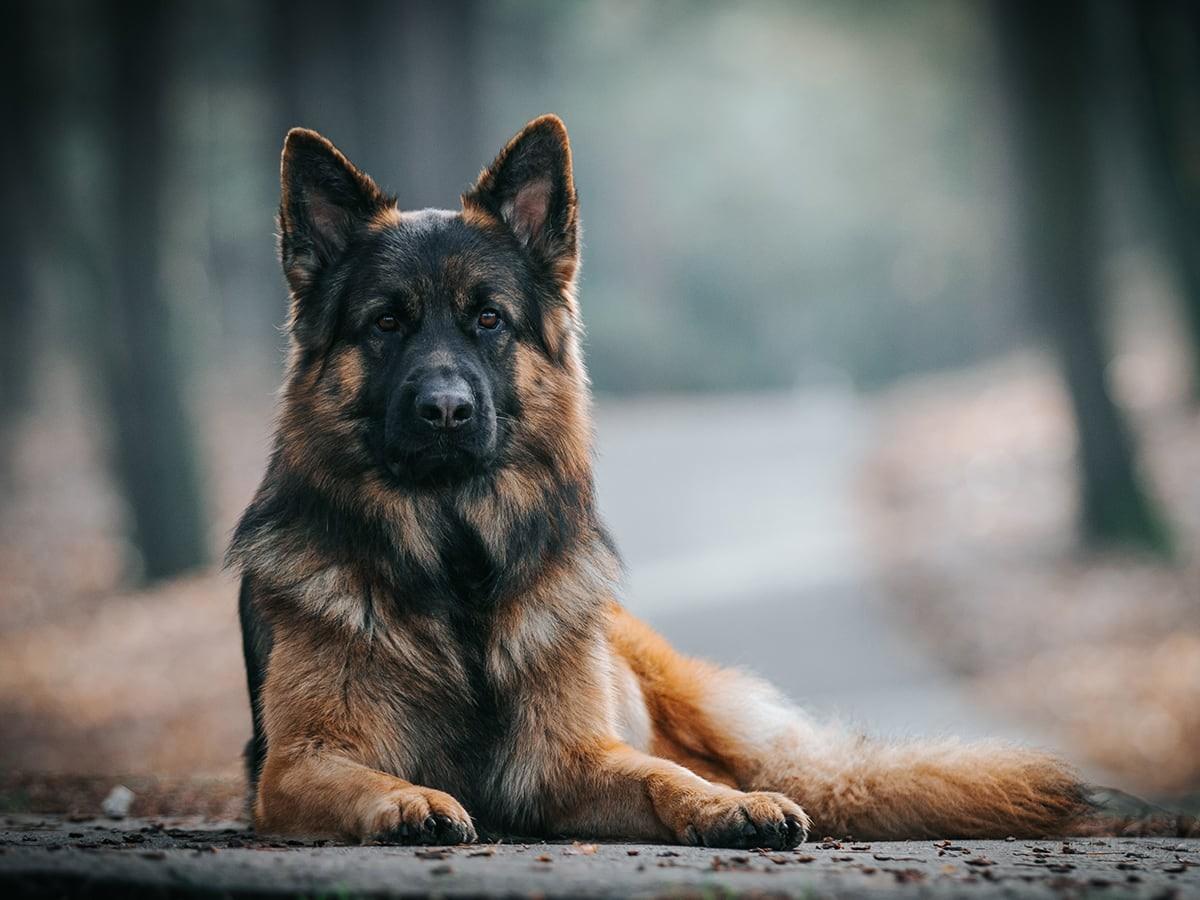
Average Weight: 66 to 88 pounds (male and female)
Average Height: 24 to 28 inches (male and female)
Life Expectancy: 9 to 13 years
German Shepherds are the working dogs of Germany. These dogs are used for everything from herding to disability assistance, search-and-rescue, police work, and warfare. Naturally protective of their families, these dogs need proper training and socialization to help shape them into well-behaved adult dogs. If you're interested in getting a German Shepherd, learn more about the cost of caring for one here.
9. Rottweilers
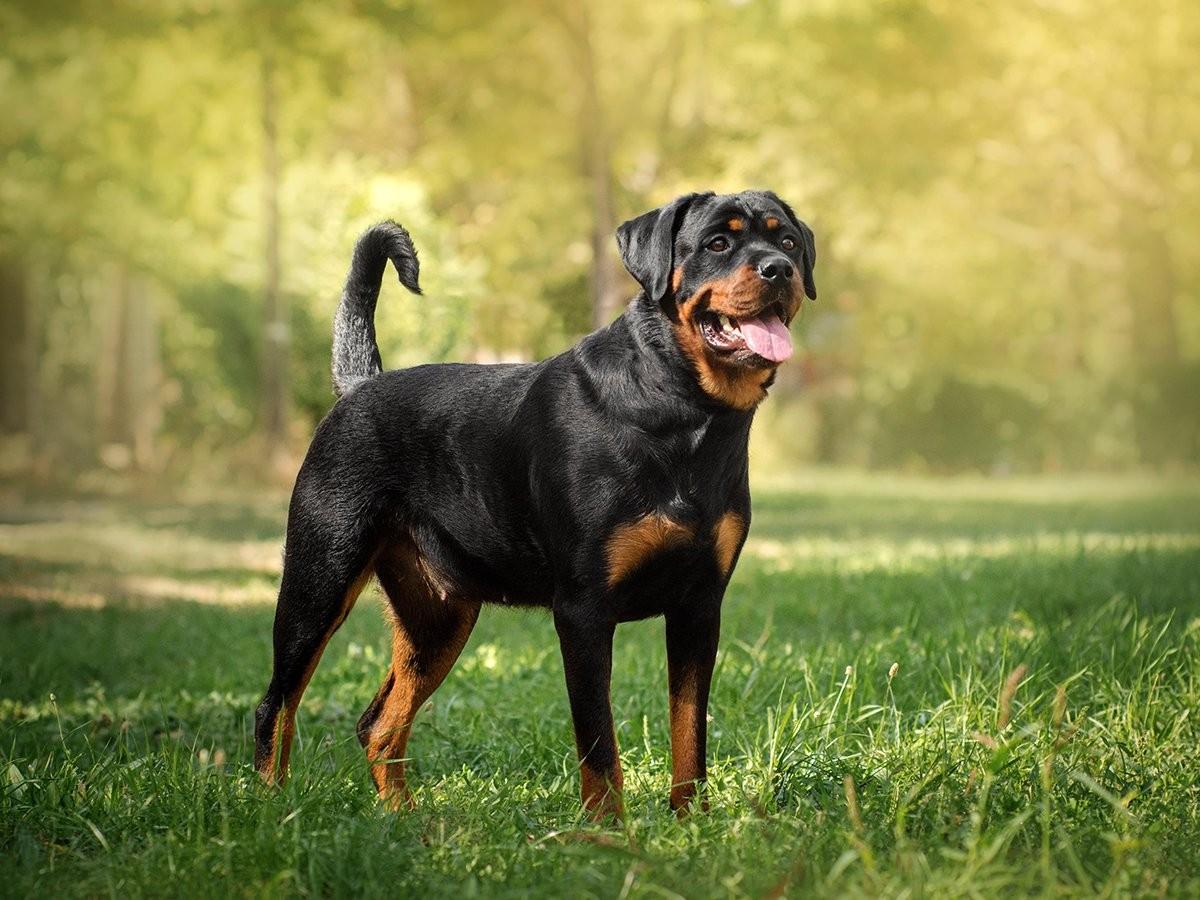
Average Weight: 110 to 130 pounds (male and female)
Average Height: 24 to 27 inches (male and female)
Life Expectancy: 8 to 10 years
Originally from Germany, Rottweilers were primarily working dogs. Known there as Rottweiler Metzgerhund, which translates to Rottweil butchers' dogs, they were used to herd livestock and pull carts loaded with butchered meat. From loving and affectionate to aggressive protectors, these dogs are shaped by their upbringing. If you are interested in bringing a Rottweiler into your home, here is a detailed breakdown of the costs of owning a Rottweiler.
10. Czechoslovakian Wolfdog
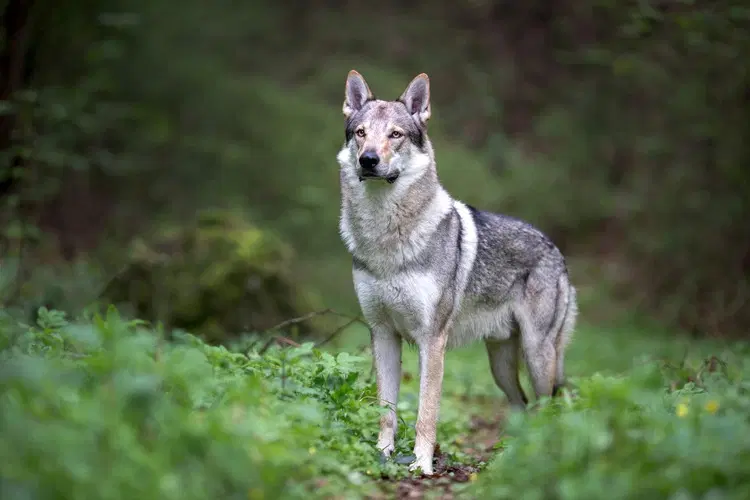
Average Weight: 44 - 57 lbs.
Average Height: 23.5 - 25.5 inches
Life Expectancy: 12 - 16 years
Czechoslovakian Wolfdogs are considered one of the more aggressive breeds due to their strong pack instincts, high prey drive, and independent, wolf-like temperament. Originally bred for military use, they are naturally wary of strangers and can be unpredictable without proper training and early socialization. Their intelligence and energy also make them challenging to manage for inexperienced pet parents. Without consistent structure and leadership, their behavior can quickly become difficult to control.
How to Prevent Aggression in Dogs
It's essential to highlight that this list doesn't mean these breeds are inherently dangerous. With responsible ownership, proper training, and early socialization, dogs of any breed can be loving and well-adjusted companions.
To help your puppy grow up into a well-behaved adult dog, we recommend the following:
Training: Start obedience training early, using positive reinforcement and focusing on socialization.
Socialization: Expose your dog to various people, animals, and environments from puppyhood.
Exercise: Provide sufficient physical and mental stimulation. Bored dogs are more likely to display behavioral issues.
Supervision: Don't leave dogs unsupervised with children or other animals they don't know well.
Frequently Asked Questions
What are the most aggressive dogs? Breeds often labeled as aggressive include Rottweilers, Pit Bulls, Doberman Pinschers, and German Shepherds. However, aggression depends more on training, socialization, and environment than on breed alone.
Are aggressive dog breeds dangerous? Any dog can be dangerous if poorly trained or neglected. Aggressive behavior usually stems from fear, lack of socialization, or mistreatment rather than inherent temperament.
Can aggressive dog breeds be good pets? Yes — with proper training, early socialization, and consistent leadership, many breeds considered aggressive can become loyal and well-behaved companions.
How can I train an aggressive dog? Work with a certified professional dog trainer or behaviorist. Positive reinforcement, structure, and controlled exposure to new environments can help reduce aggression.
Are aggressive dogs banned in some areas? Yes, certain regions have breed-specific legislation (BSL) restricting or banning ownership of breeds like Pit Bulls or Rottweilers. Always check your local laws before adopting.
What should I do if my dog shows signs of aggression? Stay calm, avoid punishment, and consult a veterinarian or animal behavior specialist to rule out medical causes and develop a safe behavior plan.
What triggers dog aggression? Dog aggression can be triggered by fear, territorial instincts, pain, lack of socialization, resource guarding, or past traumatic experiences, and understanding the root cause is key to addressing it safely.
Expert Insights From Spot
While some dog breeds are known for being gentle companions, others may require more experienced handling. According to our internal data, the average cost of a claim for treating behavioral problems in dogs is about $275*. This highlights the importance of responsible pet ownership, including proper training and socialization, to help prevent behavioral issues in dogs. Early intervention and professional guidance can significantly improve a dog's behavior and help create a harmonious home for everyone.
More About Spot Pet Insurance
Dog insurance can help provide financial assistance for covered veterinary care in case of unexpected accidents, illnesses, or injuries. Our plans can help pet parents manage the eligible costs of covered veterinary care and help ensure that their pets can receive the best treatment possible. Here are some ways that Spot pet insurance plans can help:
Helps Cover Unexpected Veterinary Costs: Spot pet insurance plans help cover the eligible costs of unexpected veterinary treatments, such as emergency surgeries, X-rays, and prescription medications for covered conditions.
Customizable Plans: Choose your annual limit, reimbursement rate, and deductible from a range of options, and create the plan that will fit the needs of your pet and your budget.
Peace of Mind: With Spot pet insurance plans, pet parents can know that they can provide the best care for their pet with less worry about the cost.
To learn more about Spot Plans or to get a free quote, click here.
Key Takeaway
Choosing a dog, regardless of breed, is a big commitment. By understanding a dog's temperament, along with the transformative power of training and socialization, you can set the foundation for a safe and rewarding relationship for you and your dog. Check out our informative video on the most aggressive dog breeds.

As Spot’s resident cat enthusiast, I am dedicated to researching and sharing information that helps pet owners take the best care of their pets. Pet ownership comes with it’s share of challenges, but my goal is to help make this journey easier.

